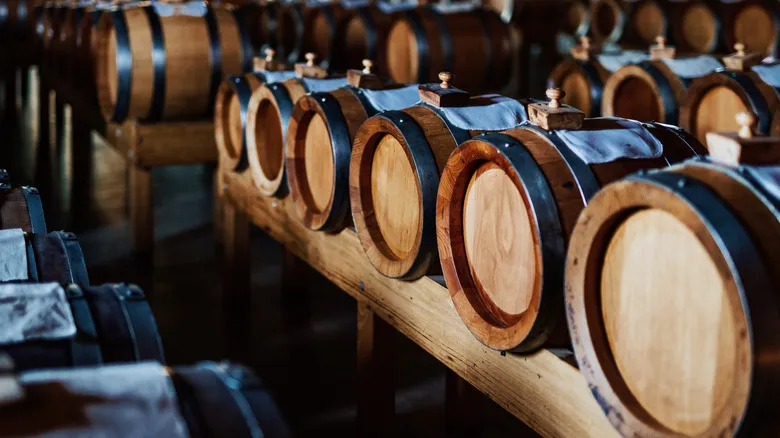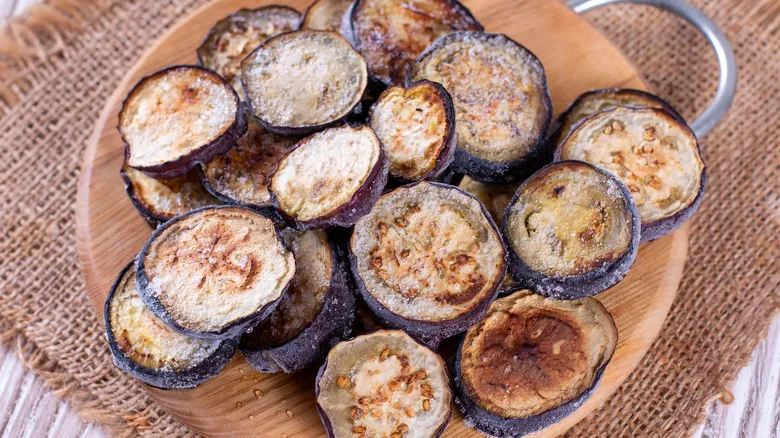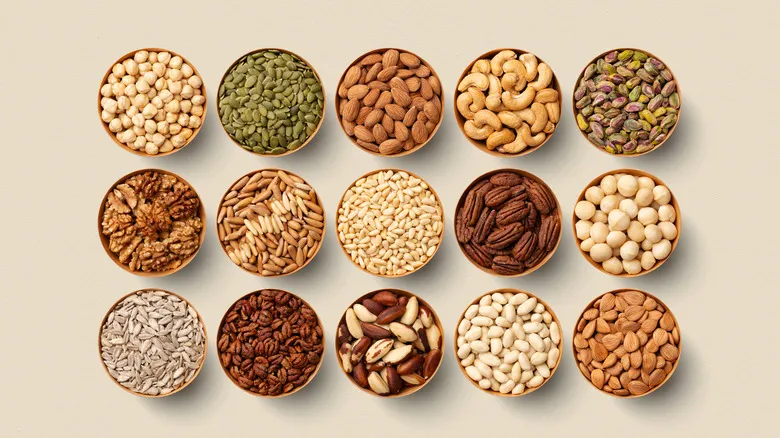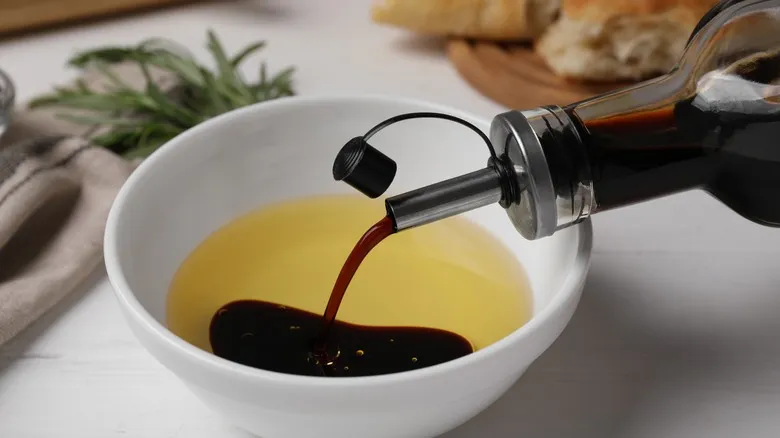Not all balsamic vinegar is made equal

While all varieties of balsamic vinegar benefit from being stored in cool, dark environments, they are not all produced in the same manner. Traditional balsamic vinegar, for instance, is subject to strict regulations and can only be crafted in Modena and Reggio Emilia, two neighboring cities in Italy's Emilia-Romagna region. The entire production process for traditional balsamic is closely monitored, and the vinegar is aged for several years in wooden barrels, similar to fine scotch. If a balsamic vinegar is traditional, you will see "aceto balsamico tradizionale" on the label, accompanied by a D.O.P. stamp, which is a European Union certification.
In contrast, condimento balsamic vinegar is produced with less stringent oversight or may not undergo proper aging. This type often carries an I.G.P. stamp from the EU or a seal from the Consorzio Balsamico Condimento, a consortium that safeguards balsamic vinegar made in Modena. Additionally, there is balsamic vinegar of Modena, which is guaranteed to be processed in Modena, although the grapes can originate from various locations to meet high demand. Colavita's Signature Edition Balsamic Vinegar and Costco's balsamic made by Acetum are good examples of this category. Modena I.G.P. balsamic is typically aged for a shorter duration and may contain colorants or thickeners.
Lastly, there is imitation balsamic vinegar, which is generally wine vinegar enhanced with colors and sweeteners. These can be produced anywhere and are significantly more affordable than authentic Italian products. Nevertheless, they are still excellent for marinades and dressings and are useful to keep on hand.
Recommended

Here's One Ingredient That Ina Garten Will Always Have In Her Freezer

Why It's Best To Cook Eggplant Before You Freeze It

Is The Mist Sprayed On Grocery Store Produce Really Just Water?

Make Nuts Last Longer By Stashing Them In The Freezer
Next up

